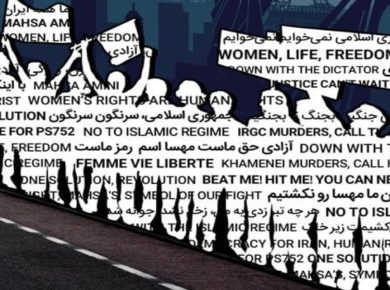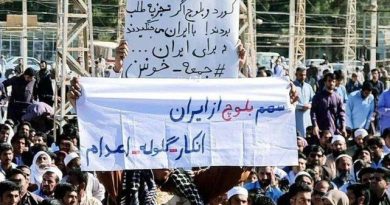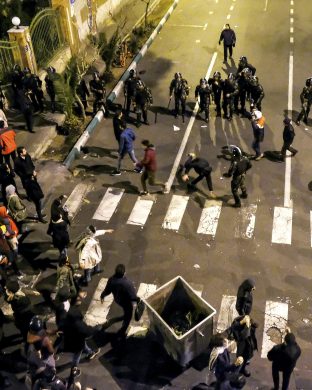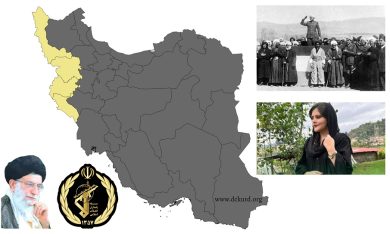While much of the world views the Islamic Revolutionary Guard Corps (IRGC) as a conventional military force or a sponsor of foreign militias, its most insidious and fast-evolving weapon lies in cyberspace. The IRGC’s digital operations—led by its powerful cyber units and intelligence wings—extend Iran’s reach far beyond its borders. It wages cyberterrorism against critical infrastructure, conducts online surveillance on its own people, and floods the internet with state-backed disinformation.
This article reveals how the IRGC has turned the internet into a battlefield—one where the rules are blurred, civilians are targets, and the truth is constantly under attack.
1. The Rise of the IRGC Cyber Command
Iran began developing its cyber capabilities in the early 2000s, but it was the IRGC—not the regular army or the Ministry of Intelligence—that emerged as the driving force behind the country’s digital offensive.
Why the IRGC Took Control:
• Its ideological mission includes defending the Islamic regime from “soft warfare” and cultural infiltration.
• Cybertools offered a cheap, asymmetric weapon against superior Western militaries.
• Digital surveillance became essential for crushing dissent during mass protests (2009, 2017, 2019, 2022).
Today, the IRGC Cyber Command is one of the most advanced and secretive divisions within the Corps.
2. Cyberterrorism: Targeting Infrastructure and Institutions
The IRGC has conducted dozens of cyberattacks targeting governments, corporations, and infrastructure around the world.
Major Incidents:
• 2012 Saudi Aramco Attack: Shamoon malware wiped 30,000 computers at the world’s largest oil company.
• 2013 U.S. Banks Attack: Operation Ababil launched massive DDoS attacks against JPMorgan Chase, Wells Fargo, and others.
• 2021 Israel Water System Hack: Attempted to poison drinking water by altering chemical ratios.
• 2022 Albania Hack: Shutdown of government services in retaliation for sheltering MEK dissidents.
These attacks are designed not only to damage systems but to send a political message—often timed to coincide with nuclear negotiations or regional tensions.
3. Digital Surveillance: Spying on Iranian Citizens
At home, the IRGC uses digital tools to monitor, harass, and imprison Iranians. Their targets include:
• Protesters and activists
• Journalists
• Women defying the hijab law
• Ethnic and religious minorities
• Students, artists, and even schoolchildren
Methods Include:
• GPS and phone tracking
• Tapping messaging apps (Telegram, WhatsApp, Signal)
• Facial recognition from protest videos
• Malware disguised as religious or political apps
• AI-powered monitoring of social media activity
This infrastructure enables mass arrests after protests, such as during the 2019 uprising and the 2022 Mahsa Amini movement.
4. The Cyber Basij: An Army of Online Enforcers
The IRGC recruits tens of thousands of volunteers—many through the Basij militia—to police the internet and engage in information warfare.
Roles of the Cyber Basij:
• Reporting social media posts
• Doxxing or threatening dissidents
• Creating fake accounts to spread regime narratives
• Flagging “immoral” content like unveiled photos, music, or satire
Cyber Basij training includes not only tech skills but religious indoctrination—framing digital surveillance as “defending Islam.”
5. Propaganda: Flooding the Internet With Lies
IRGC-controlled media and social media accounts flood the internet with disinformation, fake news, and conspiracies designed to:
• Legitimize the regime
• Demonize protesters
• Blame the West or Israel for unrest
• Sow division within diaspora communities
• Confuse international observers and journalists
Tactics Include:
• Fake news agencies and Telegram channels
• Deepfake videos of “confessions” or protest “violence”
• Hashtag flooding to bury trending dissent content
• Troll armies to harass female activists and journalists abroad
The IRGC’s psychological warfare machine makes it harder for real voices to break through.
6. Targeting the Diaspora
The IRGC extends its cyber war to Iranians living abroad—especially journalists, dissidents, and human rights defenders.
Methods:
• Hacking email, cloud storage, and encrypted apps
• Cyberstalking family members still in Iran
• Leaking private photos to shame or blackmail
• Impersonation of trusted contacts to trick targets into opening malware
Masih Alinejad, for example, was repeatedly targeted by IRGC cyber units even as she lived under FBI protection in the U.S.
7. The Cyber-Religious Complex
Many of the IRGC’s cyber activities are run through “cultural institutions” and religious centers that disguise their real function.
• Center for Soft War Studies: Trains cyber propagandists.
• Al-Mustafa International University: Recruits foreign students for IRGC-aligned cyber campaigns.
• Islamic Development Organization: Distributes apps and literature that include spyware.
This hybrid strategy merges religion, surveillance, and cyber control—blurring the lines between ideology and espionage.
8. The Domestic Firewall: Censorship as a Weapon
Iran’s “National Internet Project,” supported by the IRGC, aims to cut off citizens from the global internet.
Tools of Digital Censorship:
• Blocking over 100,000 websites, including news, social media, and VPNs
• Throttling internet speed during protests
• Full blackouts in restive regions like Kurdistan and Baluchestan
• State-run apps like Soroush and Rubika that monitor conversations
This “halal internet” model mimics China’s Great Firewall—and is enforced by IRGC cyber units.
9. Exporting Cyberwarfare: Partnerships and Alliances
The IRGC has partnered with global cyber actors and regimes to expand its capabilities.
Key Relationships:
• North Korea: Malware development and tactics sharing
• Russia: Strategic coordination in Syria and influence campaigns
• Hezbollah and Hamas: Shared cyber training and toolkits
• China: Joint censorship and surveillance technology development
The result is a growing cyber axis that blends authoritarian tools and terror tactics.
10. Human Cost: Silencing Voices and Spreading Fear
The IRGC’s cyberwar is not abstract—it has real victims.
• Protesters arrested after being identified online
• Families threatened after private messages are intercepted
• Journalists exiled for reporting the truth
• Children expelled or punished for social media posts
• Diaspora Iranians living in fear of online retaliation
Cyber repression has become as dangerous as bullets—and far harder to escape.
11. The World’s Response: Too Little, Too Late
While some countries have sanctioned IRGC cyber units, most have not taken coordinated or comprehensive action.
Current Sanctions:
• U.S. sanctions on APT39, IRGC-linked hackers
• EU sanctions on some individuals, but not the organization
• Tech companies removing IRGC-linked accounts—but inconsistently
Most platforms lack the language expertise, cultural context, or resources to counter this sophisticated cyber threat.
12. What Needs to Be Done
A. Terrorist Designation
• Designate the IRGC’s cyber units and the IRGC as a whole as a terrorist entity to block funding, tools, and travel.
B. Cybersecurity Partnerships
• Support civil society groups, diaspora communities, and activists with training and digital protection.
C. Disruption Campaigns
• Identify and shut down IRGC bot farms, fake news sites, and apps.
D. Tech Company Accountability
• Push platforms like Meta, Google, and Telegram to monitor and respond to IRGC influence campaigns.
E. Digital Safe Zones
• Create secure platforms for Iranian activists to communicate, publish, and organize.
13. What You Can Do
• Share verified content: Help real stories get seen above the noise.
• Support secure platforms: Encourage use of Signal, ProtonMail, and other encrypted tools.
• Report and block troll accounts: Don’t engage—disrupt their reach.
• Donate to cyber defense NGOs: Groups like Access Now and IHR help protect at-risk users.
• Push for policy change: Urge your government to sanction the IRGC’s digital infrastructure.
Conclusion: The IRGC’s Invisible War
The IRGC doesn’t need to fire a bullet to silence a voice, erase a truth, or crush a protest. Its digital war is quieter—but no less lethal.
In this war, truth is the battleground. Information is the weapon. And people—especially women, activists, and dissidents—are the targets.
Join Our Newsletter!
Stay informed with the latest updates, news, and ways to take action in the fight for justice and global security. Sign up now to get updates delivered straight to your inbox!





